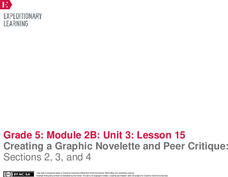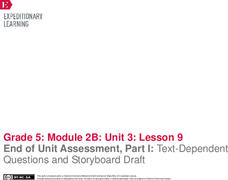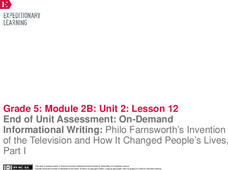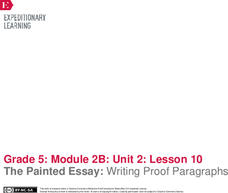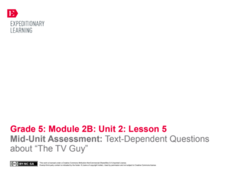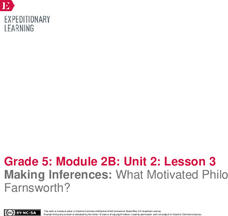Arcademics
Octopus Feed
A fast-paced multiplayer game challenges scholars to identify homophones. Once the timer starts, a player's octopus grabs the focus word's homophone pair with its tentacle. The faster and more accurate a participant is, the more points...
Arcademics
Word Frog
The Word Frog learning game challenges scholars to identify synonyms, antonyms, and homophones. Playing against themselves, participants turn a frog on a lilypad to snatch a sitting fly that holds a word.
Arcademics
Giraffe Karts
Take a ride in a go-kart in a fast-paced race. Giraffes speed along the track while scholars read subjects and choose the correct verb. The more accurate subject-verb agreements equal faster wheels.
Arcademics
Elephant Feed
Four elephants race to snatch up all the peanuts in a synonym learning game. Players turn into peanut hungry elephants in a synonym learning game. Opponents read a word and race to locate its synonym earning points till the time ends.
Arcademics
Bumper Boat Bash
Speed through a bumper boat course to practice making nouns plural. Scholars read 26 plural nouns and choose the correct form out of three to advance their boat closer to the finish line.
Arcademics
Kitten Hop
An eye-catching learning game provides scholars with the opportunity to practice Dolch sight words. Playing against other young individuals and the computer, a kitten hops from word to word making its way to the cat bed. Results are...
EngageNY
Creating a Graphic Novelette and Peer Critique: Sections 2, 3, and 4
Let's get creative! With the fun resource, pupils continue working on their graphic novelettes about an invention, adding text and images to each section. When finished, they engage in a peer critique process, giving and receiving...
EngageNY
End of Unit Assessment, Part 1: Text-Dependent Questions and Storyboard Draft: “You Can Do a Graphic Novel” Excerpt
Eyes on the finish line. Serving as the first part of the end of unit assessment, learners answer questions based on a text about how to write a graphic novel. Using what they've learned, they then create a storyboard about the invention...
EngageNY
Mid-Unit Assessment: On-Demand Note-taking and Text-Dependent Questions
Flex those brain muscles! Scholars take a mid-unit assessment, conducting research to take notes about how a particular invention helped meet society's needs. To complete the test, they work on draft sketches for their graphic novelettes.
EngageNY
End of Unit Assessment: Using Quotes to Explain Relationships and Support an Opinion
Think big! Scholars complete an end of unit assessment using their notes and graphic organizers along with the texts Big Thinkers: Was Steve Jobs This Generation’s Thomas Edison? and Steve
Jobs. To complete the assessment, they answer...
EngageNY
Using Quotes and Comparing and Contrasting Structure: The Invention of Basketball
Learners complete the third instructional activity in a row where they determine the gist of text and use quotes as textual evidence. They use details from Dr. James Naismith, Inventor of Basketball to explain how the development of...
EngageNY
Using Quotes to Explain Relationships: The Invention of the Electric Motor
Read it and read it again. Scholars do multiple reads of the text The Electric Motor. During the first pass, they read to discover the gist of the text. In the second, pupils use quotes from the article to explain the use of the electric...
EngageNY
Paraphrasing Quotes and Analyzing Visual Elements, Part 2: Investigating the Scientific Method with Max Axiom Super Scientist
Solve the world's problems. Class members move on to section two of Investigating the Scientific Methods with Max Axiom Super Scientist and complete a similar activity as in the previous lesson plan. Next, they carry out a first read to...
EngageNY
End of Unit On-Demand Informational Writing: Philo Farnsworth’s Invention of the Television and How It Changed People’s Lives, Part 2
Scholars complete the unit by finishing their end of the unit assessments. They arrange sentences for an introductory paragraph in the correct order, provide evidence for their thinking, and write a conclusion paragraph. They then...
EngageNY
End of Unit Assessment: On-Demand Informational Writing: Philo Farnsworth’s Invention of the Television and How It Changed People’s Lives, Part I
On-demand isn't just for TV anymore. Writers complete their end of the unit assessment with an on-demand writing task. They read the article Television and answer questions about the gist, vocabulary, and content. They then complete a...
EngageNY
The Painted Essay: Developing a Conclusion and Adding Linking Words
In conclusion ... this essay is the best! Scholars continue working on their painted essays by creating the conclusion. They work in groups to analyze the concluding paragraph in the model painted essay, The Electric Motor. After...
EngageNY
The Painted Essay: Writing Proof Paragraphs
Words of proof. Learners continue coding The Electric Motor by marking the first point in yellow and the second point in blue. They discuss the structure of the paragraphs by identifying transition words and evidence to support the given...
EngageNY
The Painted Essay: The Introductory Paragraph
Mimic the model for the perfect essay. Scholars work in groups to analyze a model painted essay The Electric Motor. They compare the structure of the model essay to the painted essay template they created in the previous activity. The...
EngageNY
Analysis, Reflection, and Introduction to the Painted Essay: The Invention of Television
Paint me a picture. Scholars complete a painted essay after examining the author's note in The Boy Who Invented TV. Learners identify various parts of the essay by using different paint colors and then complete task cards, using evidence...
EngageNY
Using Quotes to Explain Relationships: How the Invention of Television Changed People’s Lives
Television changes the world. Scholars determine the gist of the video clip Television Takes the World by Storm and article How Do
Inventions Affect the Way We Live? They then do a second view and read to complete an Explanation Task...
EngageNY
Using Quotes to Explain: Why Philo Farnsworth Invented Television
Television or radio? Scholars read pages 18-28 of The Boy Who Invented TV: The Story of Philo Farnsworth to discover why Farnsworth thought TV was better than radio. They determine the gist of the section and then look closer at why...
EngageNY
Mid-Unit Assessment: Text-Dependent Questions about “The TV Guy”
Say hi to the TV guy. Readers finish their mid unit assessments by reading The TV Guy and answering text-dependent questions. Learners complete multiple choice as well as short and long answer questions pertaining to comprehension,...
EngageNY
Making Inferences: What Motivated Philo Farnsworth?
Learners continue their work in The Boy Who Invented TV by examining pages 14-17. They work together to determine the gist of the section during a first read then complete a second read to make inferences, create a summary, and define...
EngageNY
Making Inferences: What Motivated Philo Farnsworth?
Turn on the tube. Learners take a look at pages 10-13 of The Boy Who Invented TV. They work in groups and complete a first read to determine the gist of the section. They then reread the pages to make and revise previous inferences and...








